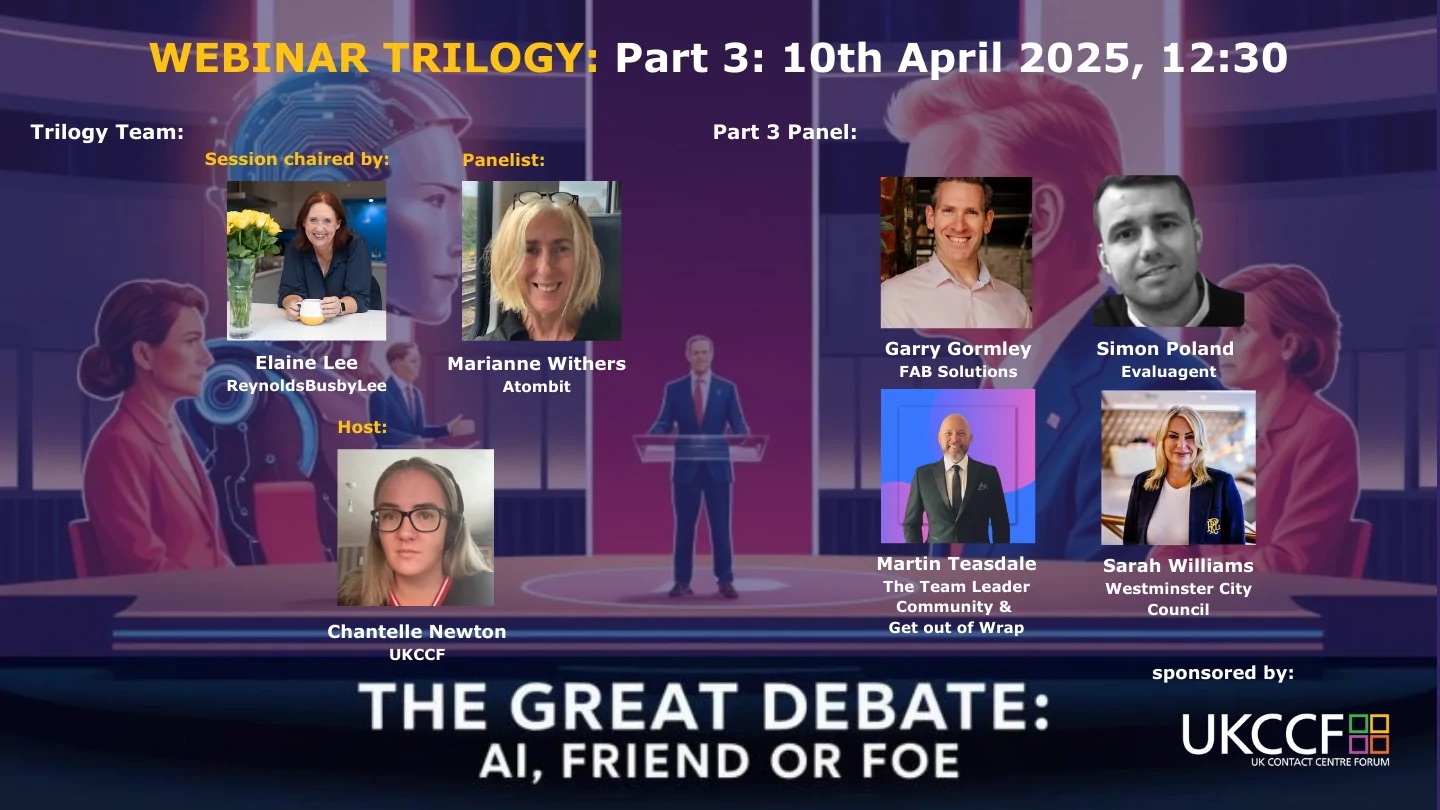
Panellists:
• Marianne Withers, Atombit
• Sarah Williams, Westminster City Council
• Garry Gormley, FAB Solutions – The Contact Centre Specialists
• Martin Teasdale, The Team Leader Community and Get out of Wrap
• Simon Poland, EvaluAgent
Chaired by Elaine Lee, Reynolds Busby Lee

The UK Contact Centre Forum's "The Great Debate" webinar series has explored the multifaceted impact of Artificial Intelligence (AI) within the contact centre industry, questioning whether it will be a friend or foe and a job killer or an ultimate solution.

Every conversation about vulnerability has two participants. In our efforts to get consumers better outcomes, are we forgetting the contact centre staff member?
Last week the FCA (7th March 2025) encouraged vulnerable customers to disclose their needs to firms and explained that those who do open up typically have better experiences with 74% of vulnerable customers who opened up reporting that staff asked the right questions to understand their situations and almost 60% reporting that the firm appeared to 'care' and took action to provide the support they need.

This expression is an adage attesting to the need for time to create great things.
It’s common knowledge that at the start of every year, there’s a great rush to make changes or New Year’s Resolutions.
The problem is that many resolutions are optimistic of great change and have often fallen by the wayside by mid- to late- January.
At this time of year personal goals are often set “to lose weight,” “get fit” or “have more sleep.”
Why do they so often fail?
A while ago I decided it was time to start looking after myself a bit better.
Here we explain what cookies are, how we use them and informs you of your choices.
Cookies are small pieces of text sent by your web browser by a website you visit. A cookie file is stored in your web browser and allows the service or a third-party to recognise you and make your next visit easier and the service more useful to you.
When you use and access our website a number of cookie files are placed in your web browser. We use these cookies to enable website functionality and to gain insights into your preferences to the services we provide such as to store your preferences to enable advertisements delivery including behavioural advertising.
We use a combination of cookies such as session and persistent. We also use essential cookies to authenticate users to prevent fraudulent use of our website.
For the full disclosure of the types of cookies we use please click here
If you would like more information regarding cookies please click here to visit the ICO (Information Commissioner’s Office) website.